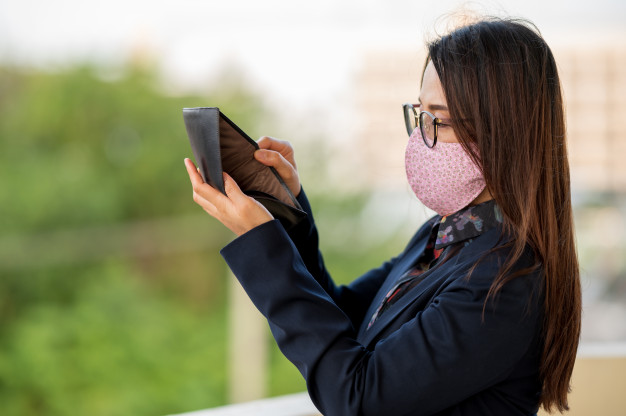
Covid-19 has changed the landscape of education across the globe, and nowhere has that been more apparent than within international education. One of the major impacts has been on the emotional wellbeing of international students, where the American College Health Association found that international students have been disproportionately impacted by this global pandemic.
In the past, international students have struggled with their mental health at higher rates than domestic students, and this was understandable given the additional challenges international students faced when it comes to learning a new language, adjusting to a new culture, adapting to a new educational system, being far away from their safety net, and being in a new country. With the introduction of Covid earlier this year, however, the stressors were exacerbated and international students were particularly vulnerable.
The COVID Stressors
What made Covid so unique was that it wasn’t an isolated event. It wasn’t geographically limited. It wasn’t a local problem – it was a pandemic that spread across the globe hitting some places harder than others, but almost everyone – no matter where they were – were affected.
Students, no matter what country they were from, were concerned about their families back home, their health and access to care locally, their education and the form it would take, and their relationships from family to friends to teachers to peers. Let’s take a few of these issues to explore their impact.
Immigration and Visa Issues
Covid is a particularly contagious virus, spreading quickly through populations in close contact. Countries had to respond, and many of those responses had to do with travel. It meant shutting down airports, closing down embassies, canceling flights, and restricting entry. Students had to decide – and quickly! – whether they would continue to stay abroad or return home. There was no guarantee that if they went home, they would be able to return to continue their studies. There was also uncertainty about what constituted meeting the requirements of a valid student visa – would online classes be acceptable? What about hybrid learning? And even if you did go home, what would learning be like online? There were so many questions, and some questions still remain unanswered today. But one thing is certain, all of this created so much uncertainty, stress, and anxiety about what to do and what the future might look like.
Housing
Many schools abruptly canceled their classes and told students that they should not plan to return to school after spring break. While this would cause panic for any student who had grown accustomed to their independence in dorms and college living, it particularly impacted international students who may have had very little back up options. Some students were able to find alternative accommodations such as living with family members who may have been local – or perhaps living in a different state. In NAFSA’s Brief on International Students at Community Colleges, they found that students at community colleges were particularly impacted since they were less likely to offer on-campus housing and students were not only distanced by the transition to online classes, but “international students may find themselves challenged by suddenly distanced – physically, socially, and emotionally – from their college campuses.” Not only do we see that housing was uncertain for many, but that students were being isolated from all parts of life and this was validated by a number of surveys done on college campuses which reported barriers to making friends and feelings of loneliness.
Finances

Another top struggle international students have placed as a top stressor during the pandemic has been their finances. People around the world have lost their jobs or have become unable to work, and this happened in record numbers. Many of these international students were relying on those very incomes to help cover a very expensive education. In other cases, students who had on-campus or off-campus jobs were suddenly unemployed and their extra income had disappeared. One way to gain insight is that some college campuses have seen a rise in economic hardship requests going up and some schools are taking a hard look at the costs to see what they can do – but there isn’t much as many of these schools are also strapped facing tuition concessions, staff furloughs and layoffs, COVID protection programs, etc.
Online Learning
Online learning has been both a struggle and a blessing for many, oftentimes it depends on where the student is located and what access they have. For any of us who have taken an online class, we can all attest that it is a very different experience from an in-person class, and requires a sense of focus that is otherwise instilled in an in-person learning environment. Many international students have struggled, especially those who have returned home, to find that they are having to take a class at 11 pm local time, and it can be hard to bring your A-game when you are already so tired. Then, there is of course, the access of having reliable internet connection that can support many of the technologies that schools are using to deliver their education. It can be difficult to participate if you do not have a reliable connection, if you don’t have a quiet place to learn away from distractions, and you don’t have all the equipment you need to make sure you are able to engage in the expected manner. Online learning has also impacted the way international students engage and make friends. Remember that study from 2012 about the difficulties international students had making American friends? This has been more challenging than ever. Many international students would show up to class, and rely on the classroom interactions to start making friends with their peers. Now, making friends in an online setting has become much more difficult – and for many, even more isolating.
Health & Insurance
Many international students were concerned about their health and what impact Covid might have on them, and they of course were not alone. But when you are in a foreign country, it can be all the more scary. Does your insurance plan cover Covid testing and if you get sick? Where do you go if you get sick? Where can you get testing, how much does it cost, and do you have access to a testing center? There were many, many questions that we had from students wondering what to do if they got sick, where to go, and whether their insurance plans cover them. There was also a lot of health information coming out, but as we were learning more about the virus, the recommendations continued to change. All of the changes, including how you can contract the virus, whether or not to wear a mask, where you should or shouldn’t go – all of this kept creating fear and uncertainty.
Discrimination
We also saw an uptick in “discrimination and isolation” according to the Lancet, where “some media outlets have used derogatory headlines, perpetuating stereotypes, and prejudices about Chinese people.” I spoke to one advisor who said that a Chinese student came into the office and said that she just wanted to let them know that she didn’t have Covid, just in case they were wondering.
Dealing with all that Stress

All of these stressors, and still others not mentioned above, continue to contribute to the stress our international students are experiencing. While every international student experiences different stressors and may handle stress differently, some studies are finding increases in depression and anxiety. Based on a poll conducted in March by Inside Higher Ed, “more than 90% of presidents reported being very or somewhat concerned about COVID-19’s impact on student mental health.” And the numbers coming out continue to support and justify this concern.
Based on these struggles it is important that students have access to mental health counseling, and many of these resources are available on college campuses. While keeping up with demand can be difficult, it is important to have multiple ways for students to access care. Having an insurance plan that includes mental health coverage can also provide more options to students who may be unable to access counseling services on campus or would like additional options. And beyond that, telecounseling has become embraced during the pandemic as a means to get confidential counseling over the phone, by chat, or through video without leaving home – some also include language support for international students who prefer to speak in their native language.
It is important to note, however, that stigma around mental health continues to persist globally, and finding creative ways to reach students who may not be inclined to use these services continues to be critical. Finding ways to connect students, create community, to check-in, and find ways to help students find a healthy life balance is also key to efforts in reaching students and encouraging resilience.
For additional student resources, be sure to check out and share our Emotional Wellness During the COVID-19 Outbreak page and our latest videos of how international students are dealing with Covid. You can also access our free emotional & mental health training program online.
Category: Health & Safety Abroad, Insurance Explained, International Student Health Insurance, International Students in the USA, School Resources, Student Insurance, Study Abroad
Tags: COVID-19, economic hardship, emotional wellbeing, Immigration and Visa Issues, insurance plan including mental health, International students, mental health, online classes, online learning, telecounseling


Recent Comments